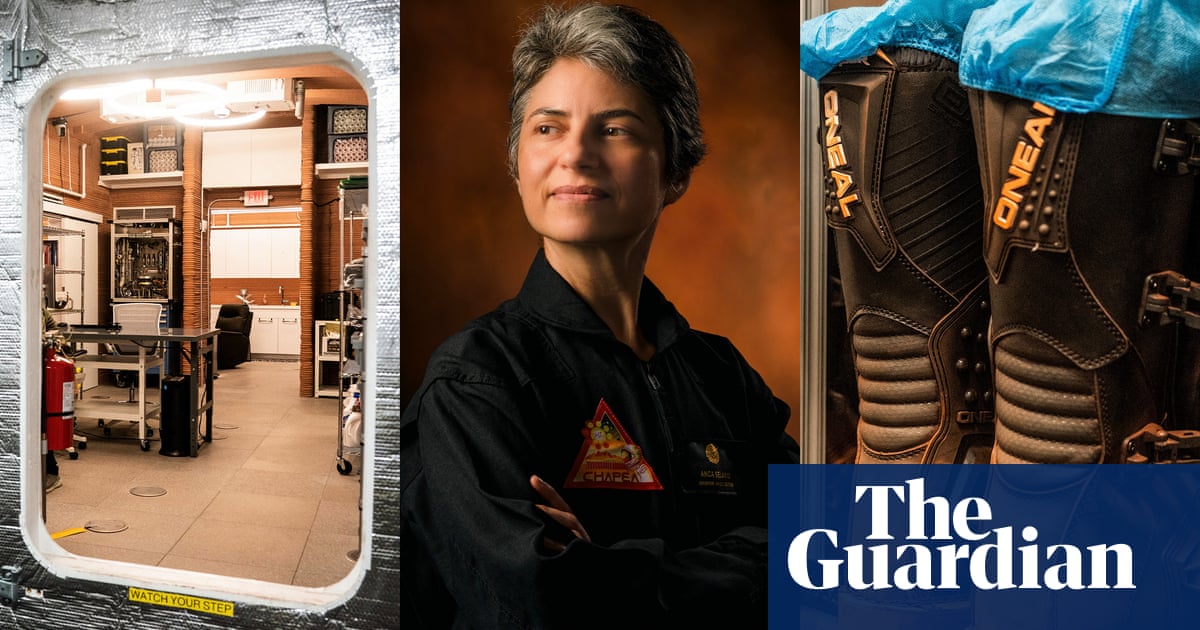Anca Selariu, a US Navy microbiologist, recently returned to Earth after spending a year living in a simulated Martian environment. Her experience, part of NASA's Chapea 1 mission, was nothing short of "absolutely exhilarating," as she describes it.
Selariu, along with three other volunteers, spent 378 days isolated from the world in Mars Dune Alpha, a 1,700 square-foot 3D-printed habitat located at NASA's Johnson Space Center in Houston. This unique facility was designed to mimic the harsh conditions and challenges astronauts will face on a real Mars mission, aiming to pave the way for a human landing on the red planet in the late 2030s.
As the science officer for this groundbreaking mission, Selariu embraced the sacrifices, from missing holidays with loved ones to yearning for the simple pleasure of fresh air. The opportunity to contribute to humanity's future on Mars was an unparalleled privilege for her. "Humans will be getting to Mars at some point in the future, and just the opportunity to participate in any way one can to help that happen, hopefully in our lifetimes, is beyond compare," she said.
The Chapea 1 crew faced real-world challenges, echoing those depicted in the film "The Martian." They were completely isolated, with no resupply flights, relying on their ingenuity and a pre-packed year's worth of freeze-dried meals supplemented by crops they grew themselves, including tomatoes and lettuce. "To me personally, it was such a joy to see and touch a living, green thing, because that is something that you miss the most while youâre away from Earth," Selariu said, reflecting on the powerful emotions that even a simple lettuce leaf could evoke in the isolation of space.
Mission managers regularly tested the crew, simulating emergencies and stressors like intensive workloads, equipment failures, and resource limitations. Selariu proudly reports they passed with flying colors. The focus wasn't just on survival, she explains, but on understanding "how we will adjust" to the unique demands of Mars. The crew's strong bond and cohesion were vital to navigating the challenges.
The volunteers were rigorously selected, requiring advanced degrees in STEM fields and undergoing rigorous training similar to that of real NASA astronauts. Selariu's expertise in vaccines, gene therapy, and infectious diseases makes her a valuable asset for the long-duration spaceflight missions of the future.
One of the most challenging aspects was communication with ground control, with a 22-minute delay for every message to mimic the time it takes for communication to travel through space. "Having to carry out a conversation across 45 minutes back and forth means you really have to think ahead and formulate the communication clearly and thoroughly," she said.
The Mars Dune Alpha habitat was meticulously designed to mirror the conditions astronauts will encounter on Mars. It features a greenhouse, medical area, exercise equipment, a lounge, private bedrooms, bathrooms, and a red sand "outdoor" enclosure for simulated Martian walks. The habitat's red color scheme reflects the use of Martian soil for 3D printing, a crucial part of constructing future Martian bases.
The crew's downtime, while filled with TV, reading, and for Selariu, drawing, was also closely monitored to assess the mental and behavioral health of humans in long-duration spaceflight.
The Chapea missions are essential to understanding the challenges of human life on Mars and developing the necessary knowledge and tools. Selariu, having successfully completed her year-long experience, is eager for the next generation of astronauts and is already excited to see their achievements. She eagerly awaits the day when humanity takes its first steps on Mars, knowing that she played a role in making that dream a reality.
Article
Technology

Living on Mars, for a Year: An "Exhilarating" Experience

